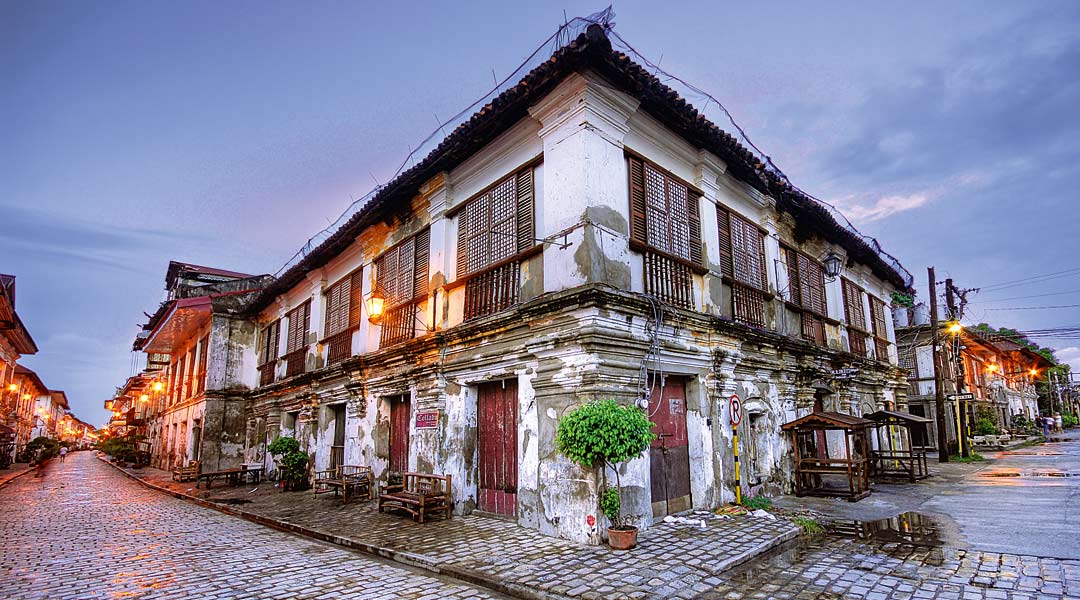The Republic of the Philippines is an archipelago of roughly 7,640 islands in the Pacific Ocean near the equator. About 2,000 of them are inhabited. The Philippines are separated into three major areas: Luzon (the largest, northernmost island, which includes Manila); the Visayas (which comprises the important islands Panay, Negros, Cebu, Bohol, Leyte, Samar, and Masbate); and Mindanao, the second-largest island in the archipelago.
If you are traveling to the Philippines, the country has a lot to offer intrepid adventurers, from bustling cities to breathtaking beaches and mountains. Here are a few pointers, tactics, and resources for visitors wishing to have a good time in the Philippines.
CITIES TO VISIT WHEN TRAVELING TO THE PHILIPPINES
Manila
Manila, often known as the “Pearl of the Orient,” serves as the country’s capital. There’s lot to see and do in this busy ancient city, including museums, parks, theaters, shopping malls, and a plethora of restaurants. The Philippines is increasingly becoming a gourmet destination, and Manila is widely renowned for its diverse cuisine and street food markets, such as the Legazpi Sunday Market, Quiapo Market, and the country’s own Chinatown, Binondo.
[adToAppearHere]
Tip for eco-friendly travel:
Many street sellers serve fresh fruit drinks that are fantastic for cooling down on hot days; carry your own metal straw and reusable container to avoid excessive plastic waste.
Vigan
Vigan, which dates back to the Spanish colonial era, is located on the western coast of the island of Luzon, near Manila. Vigan is a UNESCO World Heritage site with distinctive architecture exhibiting a combination of Asian and European style, as well as cobblestone lanes.
Tip for eco-friendly travel:
Bring an eco-bag with you when you visit Vigan’s little stores to avoid using plastic bags.
City of Cebu
Cebu City, with its perfect blend of island shore and metropolitan living, is one of the Philippines’ top attractions for both foreign and local guests. It is also the country’s oldest city and one of the Philippine birthplaces of Christianity. Tourists may swim with a variety of species off the shore of the island just outside the city’s limits, or they can try more dangerous activities like canyoneering near Cebu, Kawasan Falls.
[adToAppearHere]
City of Davao
Davao City is a terrific escape since it is the largest city in the Philippines (by population) and the capital city of the Davao region. Popular sites include Eden Nature Park (a relaxing mountain resort), Malagos Garden Resort (a 12-hectare nature theme park featuring the Philippines’ first chocolate museum), and Jack’s Ridge (a dining destination with a spectacular view of the city). Mount Apo, the tallest peak in the Philippines and a mountaineer’s paradise, is also located in Davao City. Its highest point is 2,954 meters above sea level (9,692 feet). Davao is also recognized as the home of the critically endangered Philippine Eagle (also known as the monkey-eating eagle), which was declared the Philippines’ national bird.
BEACHES TO VISIT WHEN TRAVELING TO THE PHILIPPINES
Visitors are never far from a beach in the Philippines, which boasts thousands of islands. You might want to try one of these off-the-beaten-path beach sites that are gaining popularity in addition to the Philippines’ most well-known beach, Boracay.
Island of Panglao (Bohol)
Panglao Island, located to the southwest of the province of Bohol, is a 20-kilometer-long limestone island noted for its famous diving areas. There are also several white-sand beaches, such as Alona, Tawala, Dumaluan, and Doljo, which are all accessible via the recently completed Panglao-Bohol International Airport.
Panglao is home to some of Bohol’s most luxurious accommodations, with 5-star facilities and services. Other water-based activities available on the island include dolphin and whale viewing at Pamilacan Island and diving at Balicasag Island.
Tip for eco-friendly travel:
Look for sunscreens branded “reef safe,” which include no compounds that are detrimental to coral reefs or marine life.
[adToAppearHere]
El Nido
El Nido, on Palawan Island, is famous for swimming, diving, and kayaking because of its white-sand beaches, limestone cliffs, coral reefs, and beautiful, fish-filled seas. El Nido is a good starting place for island hopping and discovering the wonders of the Bacuit Archipelago.
Camiguin
Camiguin, often known as the Island Born of Fire, is a pear-shaped island with seven volcanoes that generated many of the island’s distinctive features. Natural delights abound on the island, including lagoons and lakes, cold, hot, and soda springs, gorgeous waterfalls, and white-sand beaches that rival the best in the country.
Siargao
If you like surfing, this lesser-known region near the island of Mindanao is recognized for its great waves, laidback island culture, magnificent reefs, turquoise seas, and stunning resorts.
Tip for eco-friendly travel:
Visiting lesser-known destinations such as Siargao means not just shorter lineups and nicer selfies, but also a lower environmental effect.
[adToAppearHere]
Island of Calauit
Calauit Island, noted for its crystal-clear seas, provides eco-tourists the opportunity to swim with dugongs. These creatures, which are linked to manatees, are said to have inspired mermaid folklore. Locals on Calauit Island give conservation-focused excursions, teaching tourists about dugongs and how they can help secure their survival.
Tip for eco-friendly travel:
Please do not touch the corals to maintain the long-term viability of ocean ecosystems. Local sellers provide a broad variety of items.
NATIONAL PARKS
Among the top-rated national parks in the Philippines are Calauit Safari Park, Puerto Princesa Subterranean River National Park, Aurora Memorial National Park, Biak-na-Bato National Park, Caramoan Peninsula National Park, Libmanan Caves National Park, Mounts Iglit-Baco National Park, Fuyot Springs National Park, and Minalungao National Park. Zip line, boating, camping, hiking, river cruising, animal watching, snorkeling, and kayaking are among the activities available in the parks.
Tip for eco-friendly travel:
There are specific eco-tourism firms and services, such as Simply Philippines, to assist make sustainable adventure more accessible.
BEFORE YOU TRAVEL TO THE PHILIPPINES
Requirements for travel
Visitors from the United States will require a valid passport but will not need to get a visa to visit the Philippines. The World Health Organization recommends the following vaccinations for island travel: hepatitis A, hepatitis B, typhoid, cholera, yellow fever, Japanese encephalitis, rabies, meningitis, polio, measles, mumps, rubella (MMR), T-DAP (tetanus, diphtheria, and pertussis), shingles, chickenpox, influenza, and pneumonia.
[adToAppearHere]
When to leave
The tourist season runs from December through April. The Philippines is a tropical country, with hotter, drier months (85 degrees Fahrenheit and above) from March through June. Typhoons are possible from July to October; the “cooler” season lasts from November to February, with temperatures hovering around 78 degrees F. The temperature becomes more humid as you go south, and rain showers are likely regardless of the season.
Tip for eco-friendly travel:
Avoid buying travel-sized toiletries in plastic bottles. Use refillable containers instead, or search for packaging-free alternatives, such as shampoo bars. Multi-purpose products, such as Castile soaps, may be used to wash your hair, body, and even clothing.
What to Bring
Bring lightweight, comfortable attire (casual is OK) and a swimsuit if you intend to go to the beach or go boating or diving. You’ll want to pack sunglasses and rain protection, as well as comfortable shoes such as sneakers or sandals. A waterproof bag can assist to keep devices, such as phones and cameras, dry. Sunscreen and DEET-containing insect repellent are must-haves.
Tip for eco-friendly travel:
To avoid unnecessary plastic waste, carry your own reusable bag or bag-for-life along with your backpack.
Getting Around
The majority of travelers from the United States would most likely fly either Manila’s NAIA airport or the more recently opened Mactan-Cebu International Airport, which was named Asia-Pacific Medium Airport of the Year at the CAPA 2018 Asia Aviation Awards for Excellence.
If you want to tour several islands, there are flights that connect to smaller airports across the Philippines. Another alternative for visiting the region’s islands is to travel by boat. If you live in a big city, “jeepneys,” or small, colorful buses, are a popular means of transportation.
Currency
The Philippine Peso is the country’s official currency. Each peso is made up of 100 centavos. In the Philippines, bills and coins are utilized. It’s simple to exchange money at a shopping center, and traveler’s checks are generally accepted. While ATMs are widely available in big towns, it’s a good idea to stock up on cash before heading to smaller islands or more isolated places. In larger towns and more populous beach locations, credit cards are accepted. Save your spare change for tipping jeepney drivers.
Tip for eco-friendly travel:
Consider donating any spare money at the conclusion of your vacation to a local organization committed to beach maintenance or animal conservation.
[adToAppearHere]
Culture and language
The official languages of the Philippines are Filipino and English, however because the Philippines is an ethnically diverse country (and was a Spanish colony for 300 years), more than 150 languages are spoken in the region. Tagalog is a widely spoken dialect.
The Philippines’ primary religion is Catholicism, and churches can be found all around the nation. The older generations in the Philippines are very religious.
DO’S AND DONT WHEN TRAVELING TO THE PHILIPPINES
Before you go on your trip to the Philippines, you should think about getting travel insurance. Check with the U.S. Consult the Department of State for the most recent information on any current travel advisories. Keep your personal safety in consideration at all times, as with any vacation to a new country.
Respectful expressions such as “Sir” or “Ma’am” are considered polite, as are family words such as Tito/Tita (Uncle/Aunt) for seniors, Lolo/Lola (grandfather/grandmother), and Kuya/Ate (older brother/sister); the words “Po” and “Opo” are also considered polite. Do not call old people by their first names.

